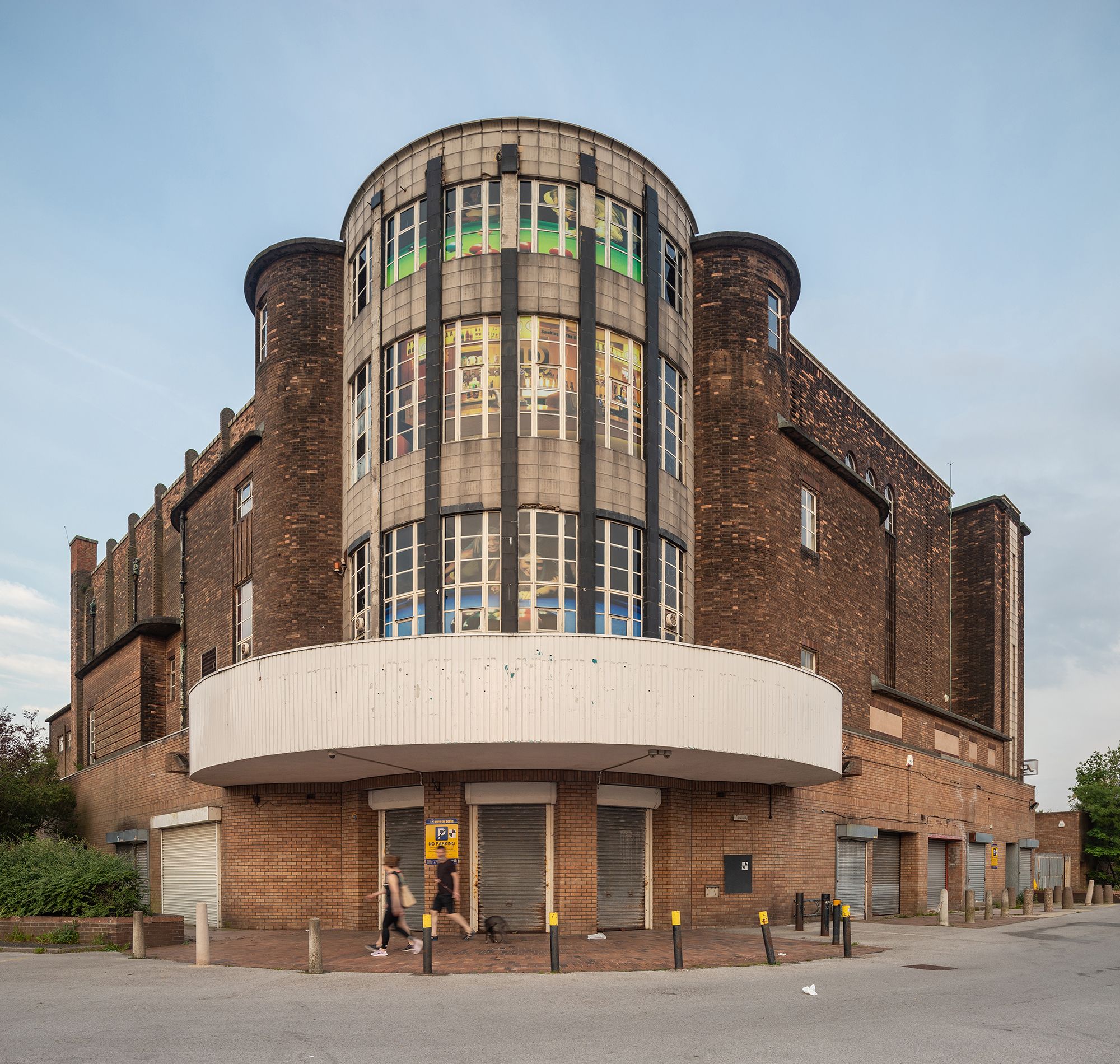Philip Butler: Cinematic Decline

When it was first introduced to the public, cinema must have been a fantastically outlandish experience. The Lumière brothers were the first to project moving pictures to a paying audience in Paris in December 1895. Just imagine going there, before TV or computers were ever a thing, and witnessing a recording of something close to real life. Yes, it was black and white, patchy and with no sound, but people’s expectations were lower back then. People have been familiar with photographs for just over half a century then and cinema surely would have resembled magic-like photographs but coming to life.
For his project Cinematic Decline — a continuation of his 2019 series and book Odeon Relics, Philip Butler traces the remnants of what once were brand-new, purpose-built cinema venues, incongruous with their surroundings back then, and some of them are still so even now. The key point of difference here though, is that none of these buildings continue to screen films, instead they showcase the cinematic afterlife bingo, pubs, churches and dereliction.
Taking his inspiration from John Maltby, a photographer who was commissioned to document the new venues as they were being completed, Butler would go on to recreate his photographs for the 21st century. He has deliberately attempted to emulate the angles and the general aesthetics of the images, the only difference being that Butler’s images are in colour and they depict what perhaps is the end of the building’s life rather than its beginning. In a poignant way, the two photographers have produced something similar to bookends — Maltby is the fresh beginning, Butler is the finale.

Odeon built approximately 140 buildings before the war in 1939 and only 52 remain in their entirety at the present day. It’s a beautifully photographed body of work, yet one which makes the viewer consider whether pretty images always signify good events or outcomes as this is not the case here. Cinematic Decline is a testament for the decline in not just cinema in the age of digital but culture overall. We are inundated with low-quality material on a daily basis, from annoying ads and pop-ups to pointless TikTok videos of people straining pasta that take away ten minutes of your life without doing a great deal to enrich it.
Tacita Dean recently spoke about the importance of film and cinema in particular; it is instrumental in the age of short attention spans if we want our children to grow up cultured without being constantly distracted, which is what happens when they watch a film on their computers (funnily enough three notifications just popped up while I’m writing this so that’s a case in point). It is a whole experience that cannot be replicated at home — the enormous screen, booming sound and the audience around you that you get to share all emotions with. It’s enormously sad that Netflix and other streaming platforms are making young people less and less interested in going to the pictures.
Sign up for the newsletter to read this post
We support independent documentary photographers and photojournalists by promoting their work. Read unique documentary stories with our newsletter.
